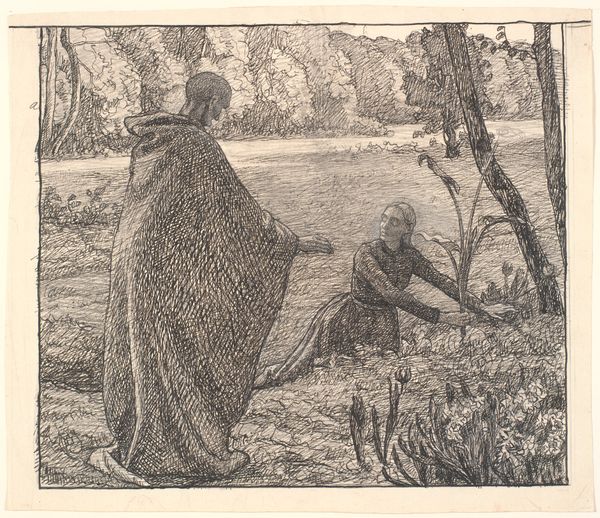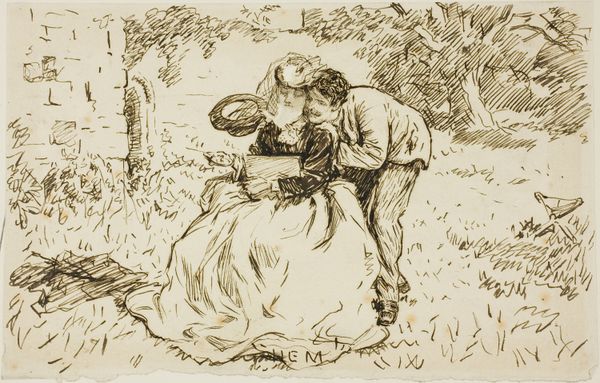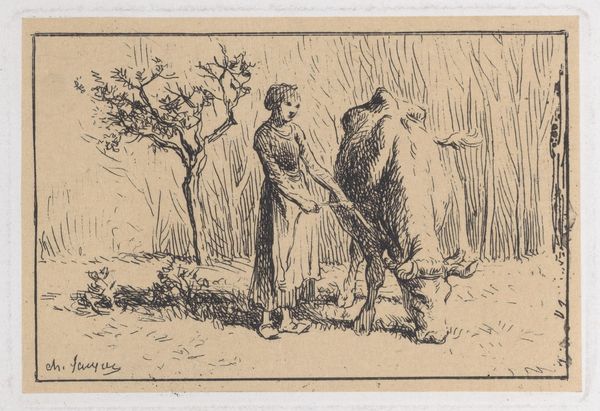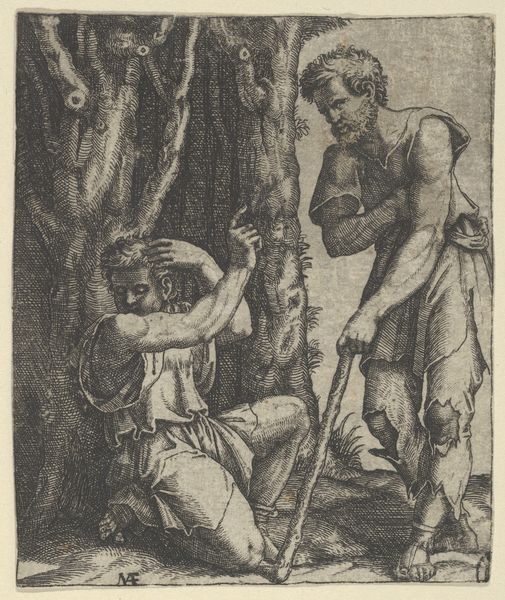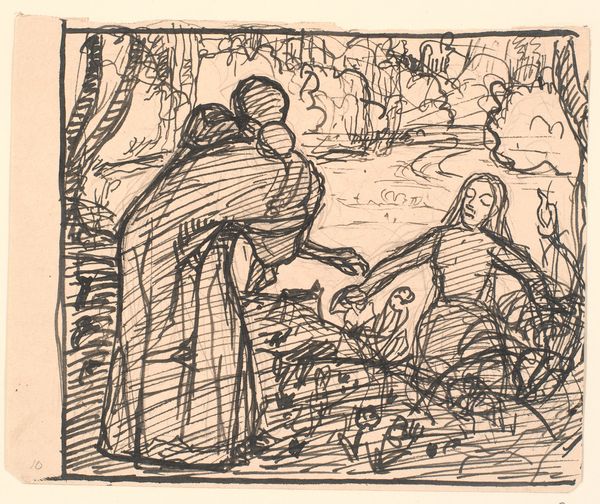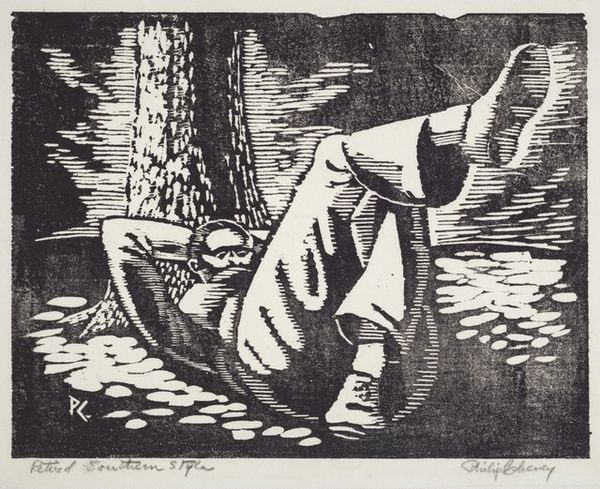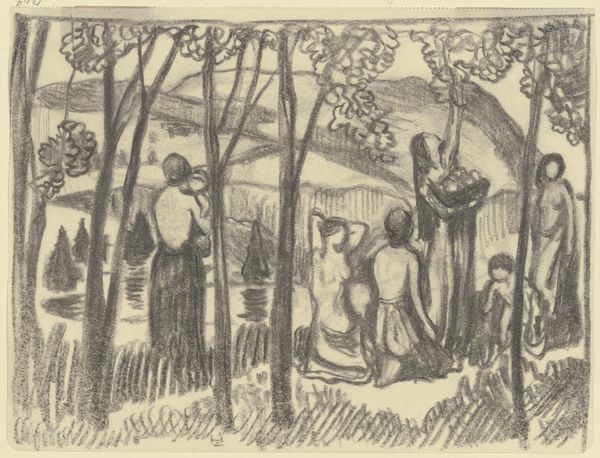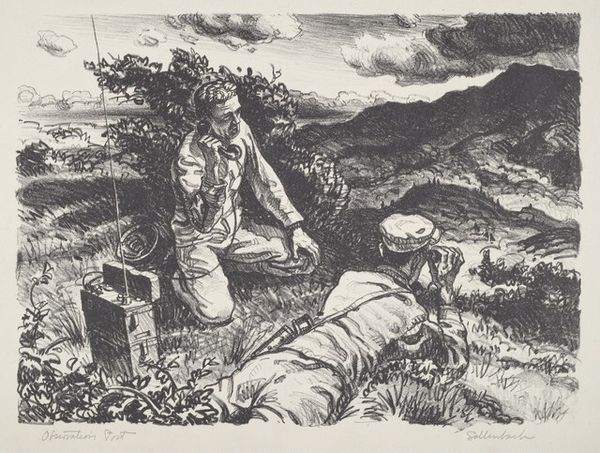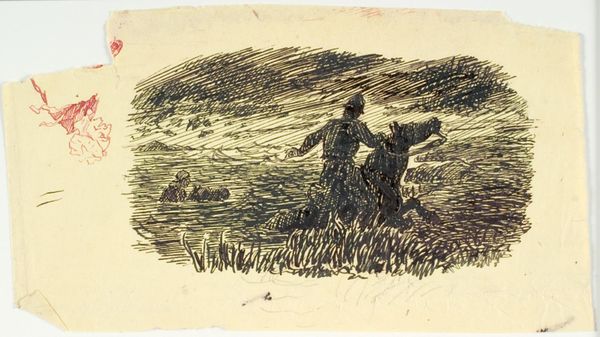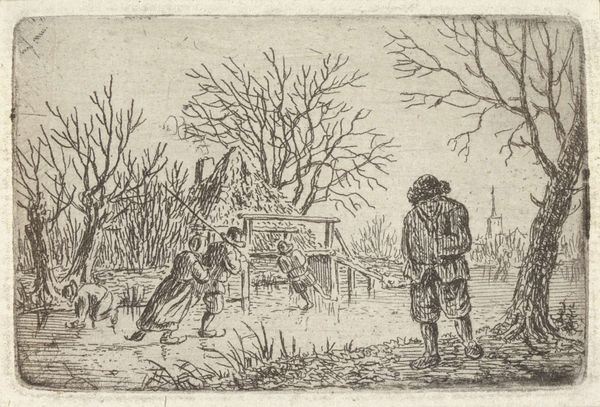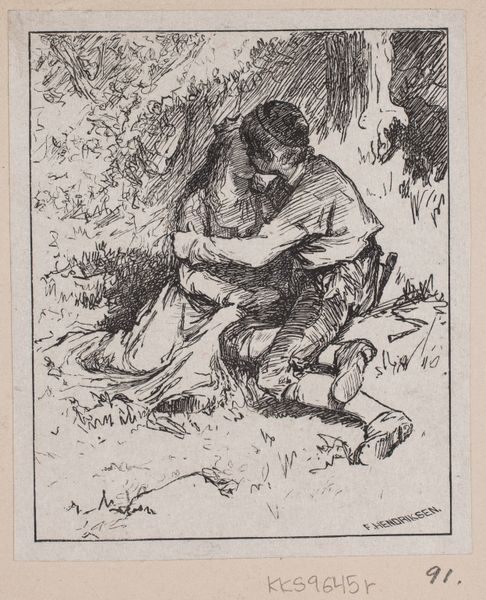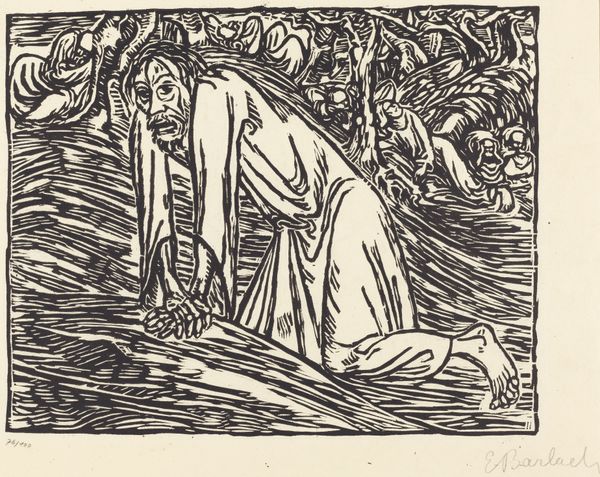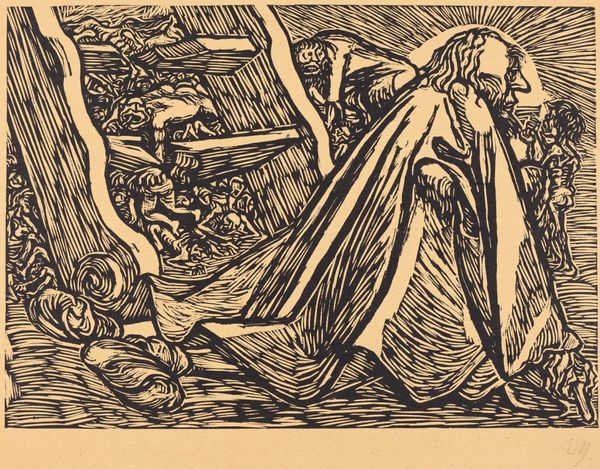
Copyright: Public domain
Editor: This is Lucien Pissarro's "Pastoral Scene," created in 1901 using coloured pencil and woodcut. It's quite charming. The colors are muted, and there's a definite emphasis on line. How do you interpret this work, focusing on its form? Curator: The compositional arrangement is notable. Consider how Pissarro has used the tree as a central, anchoring form. The trunk bisects the picture plane, creating a division, yet also a connection between the figures. The lines of the landscape draw the eye across the horizon. Note too how the figures, though small, establish the painting's rhythm. Editor: Rhythm? Could you say a little more about that? Curator: The arrangement of lines, especially in the foreground vegetation, creates a visual cadence. These vertical strokes guide your eye upwards towards the more static horizontal lines in the distant fields. Do you see the correlation between the tree’s shape and the woman's? Editor: Now that you point it out, the curvature of her posture definitely echoes the bend of the tree's trunk. Also, I notice how the coloration is distributed equally from left to right. It almost creates symmetry! Curator: An interesting observation! Color certainly reinforces the structural balance. What seems particularly compelling to me is the dynamic between the sharp, deliberate lines of the woodcut and the softer, blended hues achieved with colored pencil. It yields a nuanced textural complexity, wouldn't you agree? Editor: Definitely! It adds depth and complexity to the relatively simple scene. Thank you! I wouldn’t have thought about the connection between the tree and the woman or noticed the dynamic textural variations without you mentioning it. Curator: It's in considering these formal relationships that we are best able to recognize and appreciate Pissarro's work. It's a tightly-woven composition with deliberate attention to surface.
Comments
No comments
Be the first to comment and join the conversation on the ultimate creative platform.
